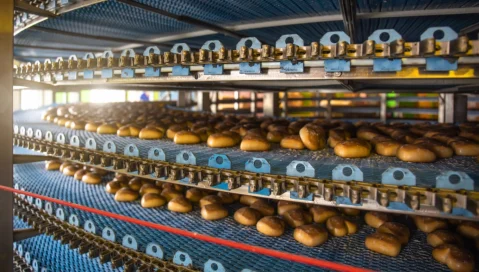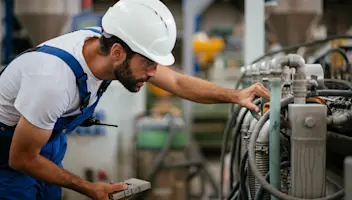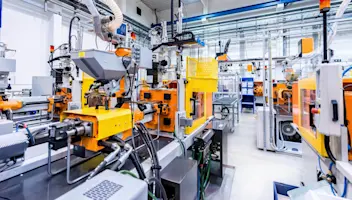Preventive Maintenance in the Food Industry: Best Practices and the Advantages of an EAM Solution
Preventive Maintenance in the Food Industry: Best Practices and the Advantages of an EAM Solution
Preventive Maintenance in the Food Industry: Best Practices and the Advantages of an EAM Solution
17 Aug 2022
Jack Payne
In the food and beverage industry, the old adage that “an ounce of prevention is worth a pound of cure” certainly rings true. You know this all too well if you’ve ever had a critically important piece of manufacturing equipment go down in the middle of a high-volume production run and felt the pressure to quickly assess the cause of the issue, rectify it and then make up for lost time.
That example scenario illustrates how valuable preventive maintenance can be, especially if your food and beverage business incorporates a number of highly specialized machines in your manufacturing processes. If your organization doesn’t already have a comprehensive plan in place, we’re here to help you build one with a list of best practices.
We’ll also discuss the role of technology—namely, enterprise asset management (EAM) solutions—on this crucial front. First, though, let’s get started by covering the reasons why preventive maintenance matters and how implementing a sound strategy can improve outcomes for your company.
Why Preventive Maintenance in the Food Industry Is Key
The following are the most significant benefits of putting a solid preventive maintenance plan in place for your food and beverage manufacturing operations. While this list is incomplete, it should serve as a good starting point for your business case:
Increased operational efficiency. Well-maintained machines—those with fresh lubricant applied, calibrations double-checked and sparkling clean condition—simply perform better. The less you have to worry about a malfunction, the more you can concentrate on achieving full production plan attainment.
Consistently excellent quality. Your formulas and procedures were crafted by experts and finely tuned, but if the equipment that executes according to those parameters is faulty, you won’t get the end result you expect. For cooking times and temperatures that are correct every time and mixing processes that get the consistency just right, you must care for your mechanical assets.
Greater food safety assuredness. Over time, equipment that is neglected can begin to pose a threat to food safety—for example, false temperature readings could result in products being undercooked, and a total breakdown can lead to ingredients becoming compromised. By conducting necessary checks and maintenance procedures, you can feel confident that everything coming off your lines is fit for consumption.
Better documentation and compliance. A preventive maintenance plan helps you stay organized in terms of your “paperwork,” even if today it is all digitally maintained. You’ll be able to confirm that certain procedures were carried out on the proper date and demonstrate your diligence to any regulatory agencies with jurisdiction in your region.
Lower repair costs. By conducting the routine maintenance that your equipment requires yourself, you decrease the chances that you’ll need to call in experts for a costly repair. This preserves the longevity of your investments and also lowers their total cost of ownership over time.
Less unplanned downtime. Having to stop your lines unexpectedly costs you both money and time. You risk being unable to fulfill orders and may need to expedite replacement parts, and meanwhile your teams have to drop what they’re doing and tend to the issue. A proactive preventive maintenance plan helps minimizes the chances that you end up in these situations.
Preventive Maintenance Best Practices
These fairly basic best practices for preventive maintenance can go a long way in promoting smooth operations and ensuring preparedness in the case of an unforeseen issue. Again, this is not a comprehensive plan in itself, but it does serve as a good starting point:
Take inventory and assess risk. Could you name off the top of your head all of the machines in use on your factory floor? It’s a lot of information to memorize, so it’s better to inventory your equipment, create a permanent record and assess the risk that each piece poses. Factor in the age of the machinery as well as its role in the production process in order to prioritize those that are either more likely to malfunction or directly affect the quality and safety of finished goods.
Create a schedule and optimize timing. To understand how to best care for your machinery, you don’t have to think outside the box—simply consult the manufacturer’s guide or owner’s manual to begin with. It should provide advice on the timing of certain procedures and the cadence by which they should be carried out. Compile this information for all of your equipment in one master schedule, and then lay that out side-by-side with your production schedule to align them optimally and minimize interruptions.
Maintain documentation and make it accessible. The staff who will being conducting the maintenance procedures absolutely must be educated on the proper techniques. That’s why it’s important to record them in a highly accessible digital format that they can consult at any time to ensure they’re doing the job right. Any manuals or guides that came with your equipment can come in handy here for instruction as well.
Designate authority and delegate tasks. Getting preventive maintenance scheduled is one thing—ensuring it’s accomplished is another. Make certain individuals responsible for certain responsibilities and communicate clearly on the matter. It’s better still if you select employees who already regularly work with the machines they’ll care for, as they’ll grow more familiar with the processes and be able to identify potential issues more easily.
Keep all necessary parts and tools on-hand. You know how important your ingredient inventory is for manufacturing the food and beverage products you sell, but it’s also crucial to have the stock of replacement parts and all required tools if you want to be successful in your preventive maintenance efforts. You should order ahead of time and replenish supplies periodically so you’re not caught in a bind.
Be prepared to apply temporary fixes. Even with all of this work ahead of time to optimize your approach to preventive maintenance, you’ll still occasionally face a surprise and have to think on your feet to overcome a setback with your equipment. Sometimes it’s best to trust the personnel on your staff who are most experienced with the malfunctioning machine to find a temporary fix—just ensure it doesn’t create a liability in terms of employee or food safety.
Record maintenance history in detail. We’ve mentioned at various points in this post how crucial documentation is for good preventive maintenance, and that stands for historical records of procedures conducted as well. These accounts will not only allow you to check that your plan is being followed properly—they’ll also help you satisfy your legal requirements for safety and pass any inspections conducted by enforcement agencies.
How an Advanced EAM System Helps You Master Maintenance
The above information should help you create a holistic strategy for preventive maintenance, but in an industry that moves as fast as food and beverage, it helps to have every advantage on your side. That’s why it’s highly recommended that manufacturers seek out a purpose-built EAM platform for the critically important features they provide.
An intelligently designed EAM, like our own Aptean EAM for food and beverage businesses, helps you maintain all of the vital documentation that preventive maintenance entails, as well as your maintenance schedule and the persons responsible for conducting maintenance procedures. The interface can even prompt them with automated on-screen reminders when maintenance is due.
What’s more, EAM solutions can also help you maintain your inventory of spare parts, helping you to stay in-the-know regarding the levels of your stock and incorporating parts procurement within the larger system. Advanced systems like Aptean’s can also integrate your safety and compliance protocols with your broader preventive maintenance plan, ensuring they aren’t forgotten during busy daily operations.
Additionally, the analytics and reporting functions of our offering can generate a wealth of data that can be leveraged when making strategic decisions. Our system is also fully scalable—with options for additional features as your business grows—and also very easy to use, giving everyone in your organization the information they need in one highly accessible and completely paperless database.
Meanwhile, the reliability-focused capabilities will help maximize asset performance, reducing downtime and improving efficiency, quality and throughput. Aptean EAM for food and beverage manufacturers does all of this and at the same time is backed by teams of dedicated professionals who understand the industry and are ready to provide dependable service and streamlined software updates as necessary.
So, ready to learn more about how Aptean’s food and beverage EAM can help you truly master preventive maintenance? Contact us today, or request a personalized demo.
Related Content


Ready to start transforming your business?
We’ve got the specialised EAM solutions you need to conquer your industry challenges.






